1. Assessment
1.1. Therapeutic Recreation Assessment
1.1.1. Functional Assessment
1.1.2. intake asessment
1.1.3. Environmental assessment
1.2. Dietary asessment
1.2.1. Diet History
1.2.2. Diet observation
1.3. Physiotherapy assessment
1.3.1. Physical Evaluation form/asessment
1.4. Medical assessment
1.4.1. current Medication and allergy information
1.4.2. Social history
1.4.2.1. behaviour Patterns
1.4.3. physical examiniation
1.4.3.1. frequency of bowel movements
1.4.3.2. Weight
1.4.3.3. Clinical Features
1.4.3.3.1. facial features
1.4.4. Current diet
1.4.5. Genetic testing.test results
1.4.6. Pattern of speech
1.5. Occupational Therapy assessesment
1.5.1. initial assessment
1.5.2. Functional assessment
1.5.3. Home assessment
2. TR Treatment : Using TR models to guide TR treatment plan
2.1. Leisure Ability Model : Emphasis on helping clients improve their abilities
2.1.1. TR will complete functional recreation assessment: Documenting key issues such as : client needs, strengths and hidden barries to client's participation to recreation
2.1.1.1. Based on TR assessment, client will Focus on improving and enhancing physical needs.
2.1.1.1.1. Prescribed adapted aquatics program 2x a week. Reduce spasticity through coordinated movements, using balls, swim boards, and other flotation devices requiring bilateral limb coordination
2.2. Leisure Ability Model : Emphasis on helping clients improve their abilities
2.2.1. TR will complete functional recreation assessment: Documenting key issues such as: client needs, strengths, and interests of leisure.
2.2.1.1. Based on assessment,Client will participate in Verbalization and self expression music herapy based program. To facilitate appropriate expression of emotions
2.2.1.1.1. Music Therapy 2x a week: serve as both a treatment intervention and a leisure experience.
2.3. Optimizing life long health Through tr model: Purpose to improve cognitive, psychological, physical, spiritual, social and leisure.
2.3.1. TR will complete functional and leisure assessment.
2.3.1.1. Goal: for client to follow direction directions, initiate and follow task
2.3.1.1.1. Shape Bingo: Using Picture boards and other visual aids to help client with bingo game. Consistent redirecting by tr therapist
2.4. Interaction Model: Purpose is to maximize dimensions of wellness, and enhance leisure functioning
2.4.1. Assess the client skills, interest and surrounding environment
2.4.1.1. Define goals and objectives: For client to demonstrate control of grasping objects
2.4.1.1.1. Modify activity to the client abilities and environment: squirt gun painting or finger freestyle painting paper or a variety of patterns.
2.5. Leisure Ability Model : Emphasis on helping clients improve their abilities
2.5.1. Based on recreation assessment, TR therapist will focus on a functional intervention.
2.5.1.1. For client to follow directions by hitting drum pad with drum stick (cognitive), to make a simple beat following with the TR therapist
2.5.1.1.1. Adapt to client skills and comfort level as necessary. Assist client as necessary
3. TR interventations
3.1. Swimming
3.1.1. purpose of activity: enhancing the psychomotor and physical well being of the client
3.1.1.1. For client to learn specific swimming strokes (, elementary backstroke, sidestroke, and crawl when possible)
3.1.1.1.1. Encourage the client and make adaptions to client level of skill, safety and confidence during activity
3.2. Learning to kick soccer ball
3.2.1. Purpose of activity: interacting with TR therapist during soccer 1:1 games, especially partner games and activities. To maintain physical functionality.
3.2.1.1. For client learn to learn specific soccer skills such as kicking, passing and throwing ball
3.2.1.1.1. Encourage the client and make adaptions to client level of skill and confidence during activity
3.3. Shape Bingo
3.3.1. Purpose of activity: to help the client maintain, enchance and build on gross motor movement
3.3.1.1. Goal: for client to follow direction directions, initiate and follow task when playing shape bingo
3.3.1.1.1. Encourage the client and make adaptions to client level of skill and confidence
3.4. Free style Paint therapy
3.4.1. Purpose of the activity: for client to develop motor skills
3.4.1.1. Goal: For client to demonstrate control of grasping objects
3.4.1.1.1. Encourage the client to paint a line and or easy patterns
3.5. Pet Therapy
3.5.1. Purpose of activity: Purpose to improve psychological social and leisure dimensions
3.5.1.1. Goal: for client to enhance emotional expression, social skills through interaction with pet and or promotion of tactile touch such as petting the animal or dog in a safe environment
3.5.1.1.1. Make adaptions for client and pet safety as needed
4. Evaluation of TR intervention
4.1. Activity Analysis evaluation: Did the program meet the specific client outcomes?
4.2. Evaluating the quality and effectiveness of the intervention: evaluation form
4.3. Evaluating the client outcomes by questionnaire. Did the client meet his or her goal's
4.4. Specific Program evaluation procedure
4.4.1. - 1. was the session implemented as designed? if not what changes were made?
4.4.1.1. How appropriate were the activities content used in relation to program objectives addressed in this session
4.4.1.1.1. Did the sequence of activity appear to be logical and appropriate?
5. Causes
5.1. Missing Chromosome 15: 68% of cases
5.1.1. see Supplemental Mind map sheet for more information
5.2. UBE3A Gene mutations: 11% of cases
5.2.1. see Supplemental Mind map sheet for more information
5.3. Uniparental disomy: 7% of cases
5.3.1. see Supplemental Mind map sheet for more information
5.4. Imprinting defect : 3% of cases
5.4.1. see Supplemental Mind map sheet for more information
5.5. Clinical/other :11% cases
5.5.1. see Supplemental Mind map sheet for more information
6. Preventation
6.1. Genetic Counselling: may help but not guaranteed as a preventation measure
6.2. No known prevention measures
7. Definite: Signs & Symptoms
7.1. Developmental delays
7.1.1. such as lack of crawling or babbling at 6 to 12 months, and intellectual disability
7.2. Speech impairment: Lack of or minimal speech
7.2.1. receptive and non-verbal communication skills higher than verbal ones
7.3. Behaviour uniqueness
7.3.1. Frequent smiling and laughter
7.3.2. apparent happy demeanor
7.3.3. easily excitable personality
7.3.4. hypermotoric behavior
7.3.5. short attention span
7.4. Movement or balance disorder
7.4.1. ataxia of gait and/or tremulous movement of limbs
7.5. Problems Relating to Nutrition
7.5.1. Feeding Problems
7.5.1.1. difficulty sucking or swallowing
7.5.2. Obesity in older patients- due to lack of mobility
7.5.3. constipation
7.5.4. gastroesophageal reflux
7.5.4.1. see Supplemental Mind map sheet for more information
7.6. Feeding Characteristics
7.6.1. Sucking and/or tongue thrusting
